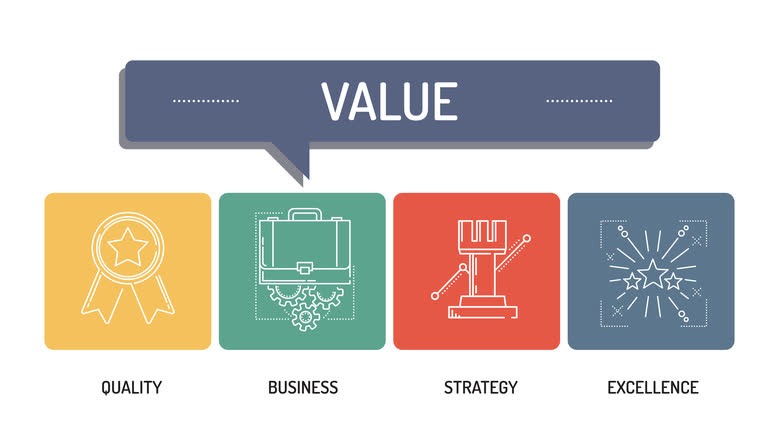Dividend Value Builder Newsletter
Book of Value Quotes by Anurag Sharma

The Book of Value by Anurag Sharma was published in 2016. I appreciate the “Second-Level Thinking” (a Howard Marks phrase) that I found sprinkled throughout the book. Here are some of the quotes I found to be investment gems! (Comments in italics are mine.)
35 Quotes From Book of Value
Increasingly investing is no longer conceived as being about carefully employing capital in sound, well-run businesses; it’s mostly about finding the best gamble with the quickest payoff. (This is destructive behavior)
(pg. xiii)
While chance does influence investment performance, emotional and broadly analytical skills exert a much greater influence on the experiences that investors have when investing. (sharpen your analytical skills and control your emotions!)
(pg. xv)
Investing must be approached with caution and remain firmly grounded in the principles of business analysis.
(pg. 1)
The idea of standard deviation as risk is indefensible, as it incorrectly assumes that the underlying distributions are known in advance. (Risk is the probability of permanent loss of capital)
(pg. 8)
Gamblers want to take chances; investors want to make good choices. Gamblers want to trade, investors want to invest.
(pg. 21)
Individual errors often become highly correlated to produce large scale moves and collective errors.
(pg. 41)
Investors must be quantitative and, aware of the hazards of investing, guarded in their evaluation and interpretation of facts. (Require a margin of safety)
(pg. 81)
Disconfirmation is key, method is king, and a conservative orientation is indispensable for investing wisely.
(pg. 81)
Advanced investors become interested in developing a method — a conceptual framework — to guide them through the chaos of the financial markets. (Stop listening to chatter and develop a sound investment method)
(pg. 98)
Much of what happens in investing seems to be driven by people’s strong inclination to focus too much on what others say and not enough on their own analysis of the facts at hand.
(pg. 102)
There is little if any connection between careful analysis of fundamental factors and investment performance in the short-term.
(pg. 103)
Together, a focus on the short term and an inclination to copy others go hand in hand with the facts that prices are unpredictable in near term and markets are incredibly noisy.
(pg. 103)
With the lay following the experts and experts following each other, investing often becomes an exercise in which everyone follows everyone else with few, if any, carefully evaluating fundamental drivers of economic value.
(pg. 103)
The overwhelming noise (commentators, pundits, & prognosticators) and inclination to imitate together induce people to herd, perhaps the thought that others might know something they themselves do not.
(pg. 104)
Good investors are capitalists — they invest on the basis of sound data and analysis, with an eye for what could go wrong.
(pg. 105)
The ability to make and the very act of making reasonable estimates of economic worth separates investment from speculation.
(pg. 108)
Formally trying to refute or disconfirm your investment thesis is, in essence, the art of looking (for a sound investment opportunity).
(pg. 109)
Value is an elusive concept and precisely computing it is not necessary for making for smart investment choices.
(pg. 113)
The Key to investing wisely is engaging in the process of valuation in order to make reasonable estimates of approximate economic worth (intrinsic value).
(pg. 113)
Good investment opportunities arise when prices seem to have significantly diverged (mispricing) from such estimates of worth.
(pg. 113)
The power of analysis is in the fact that it forces investors to ground their decisions in the facts of the case, allowing them to control their impulses, to slow down before committing.
(pg. 121)
Careful and rigorous analysis helps investors resist the temptation to do foolish things.
(pg. 121)
Approximation of value must be made cautiously and with care, defensively and with humility in the knowledge that valuing a business is, in the end, more an art than a science. It is more about maturity and emotional control than about complex mathematics. It is about using assumptions that are consistent with observable facts and are logically defensible.
(pg. 122)
Investment analysis, in other words, is the process of uncovering the odds built into a situation, so that you may commit resources where they are heavily in your favor.
(pg. 123)
Where a keen understanding of the operations and fundamentals is missing, uncertainties remain high and drive down the valuation because of the need to use a high discount rate.
(pg. 137)
Rigorous thinking, rather than precision, is the key to investing wisely.
(pg. 137)
Companies create economic value when they consistently deliver well articulated value propositions through well-executed operating models.
(pg. 211)
Durable and meaningful rewards for investors come from selectively investing in companies that solve significant problems at a sufficiently large scale to make efforts economically meaningful.
(pg. 211)
Investors would be well served by limiting themselves to those companies whose business models they can understand and evaluate.
(pg. 213)
Reconceptualize risk as the probability of loss.
(pg. 253)
The fundamental question that investors should persist in asking is simply this: Is the price attractive in relation to reasonable estimates of value?
(pg. 257)
Protection for investors comes not from overly broad diversification but from good valuation in relation to prevailing prices.
(pg. 257)
Valuation remains by far the single most important criterion in company selection and portfolio construction.
(pg. 257)
Caution can lead to growth for the simple reason that purchasing at a price sufficiently below robust estimates of intrinsic value bring with it the potential of upside.
(pg. 269)
Investors routinely get in trouble when they pay too much for strong and well-managed companies.
(pg. 274)
Minimize Large Portfolio Drawdowns
Invest With Confidence in Less Time - Manage Your Portfolio Without Behavioral Errors
